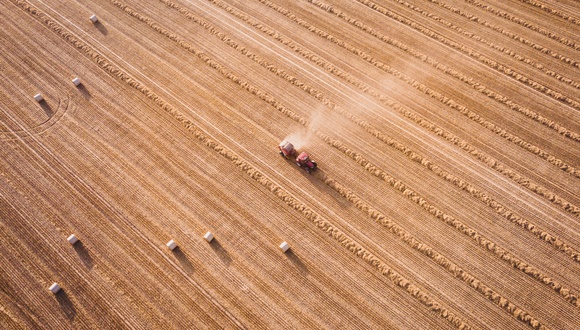Half of all cropland could be returned to nature with no fall in production
Half of the world’s cropland could be used for other purposes if agricultural efficiency were improved through high-yield farming. That would mean making 576 million hectares of land available, more than 10 times the area of Spain (approximately 50 million hectares).
The study’s authors propose that 50% of freed-up land be set aside to allow nature and biodiversity to recover. Those are the main conclusions of a new study by the International Institute for Applied Systems Analysis (IIASA) which has been published in Nature Sustainability. The study is part of IMBALANCE-P, a project funded by the European Research Council and led by CREAF-based CSIC researcher Josep Peñuelas.
According to the authors, strategies of the kind in question are urgently required, as global demand for agricultural products is growing constantly, and allowing more and more land to be used for farming is detrimental to nature. “We are, in any case, talking about controversial, highly sensitive policies for which a specific plan would be needed to avoid unwanted outcomes”, says Josep Peñuelas. “Agricultural efficiency is achieved by farming the potentially most productive land, using irrigation and fertilizers if required and available”, he adds.
The results of the research undertaken show that, with high nutrient inputs, current agricultural production could be matched by farming only the most productive land. The study also found that current land use is rather inefficient, due more to management decisions than to, for instance, the effects of climate on crop yields.

Christian Folberth, the study’s lead author and a researcher in IIASA’s Ecosystem Services and Management Program, explains that he and his colleagues determined what the implications of changing the system would be for “fertilizer and irrigation water requirements, greenhouse gas emissions, carbon sequestration potential, and wildlife habitat available for threatened species.”
16 vital crops
Working with the world’s 16 major crops, including rice, corn, wheat, soybeans, sugar cane, potatoes and cotton, the research project was carried out using the EPIC (Environmental Policy Integrated Climate) model, which makes it possible to quantify the effects of factors such as nutrients, water, soil characteristics, climate change and farming practices on global crop production. The scenarios encompassed in the research showed that intensifying nutrient inputs and favouring the most productive land would minimize the amount of land needed to maintain current production levels.
The study’s main findings indicate that a decrease in cropland would probably reduce greenhouse gas emissions and irrigation water requirements, although global fertilizer input requirements would remain unchanged. Additionally, thanks to the restoration of natural vegetation, freed-up cropland could play a key role in carbon sequestration and the recovery of biodiversity.
Compromises and alternatives
The adverse effects more intensive farming might have, such as nutrient pollution and loss of income in rural areas, will need to be studied further. Nonetheless, the findings of the research “can help policymakers benchmark results of integrated land use scenarios”, states Michael Obersteiner, one of the study’s leaders and a former director of IIASA’s Ecosystem Services and Management Program. “It also shows that cropland expansion is not inevitable and that there is significant potential for improving present land use efficiency.”

New impetus
The concept of land sparing, i.e. the setting aside of land for biodiversity conservation, has recently been given fresh impetus by the Half-Earth Project, which has called for half of the planet’s land and seas to be protected with a view to reversing the species extinction crisis and tackling greenhouse gas emissions and other effects of land use.
Started in around 2005 by conservation biologists, the debate on land sparing recognizes that there is generally a limit to the extent to which farmland can be made wildlife friendly without compromising yields. In the absence of sufficient balance between farmland and wildlife, however, natural ecosystems lose stability and their capacity to sustain their biodiversity, making habitat conservation or restoration measures necessary to protect threatened species.







